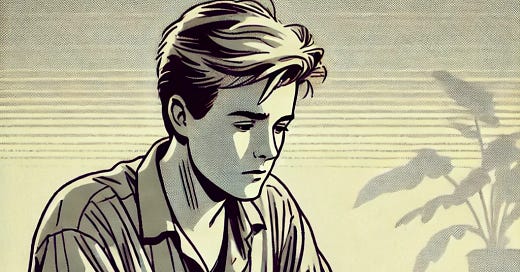As you get older, you start to get little foretastes of death. It’s the sudden lightness in your head of mysterious origin. A catch in your breath as you mount the stairs. It can even be waking up from a daytime nap, disorientated and lost to time.
Eventually, the knock will be on your door. The judgement from which there is no appeal. How will you respond in that moment?
One of the greatest acts of writerly bravery that I’ve witnessed was some five years ago when Peter Schjeldahl published “The Art of Dying.” Look at these first sentences: “Lung cancer, rampant. No surprise. I’ve smoked since I was sixteen, behind the high-school football bleachers in Northfield, Minnesota.”
“Lung cancer, rampant”—the beautiful Schjeldahl compression, but this time directed at his end. He was given six months to live. (He lived many months longer than that, almost to the point of slight embarrassment.)
Most critics stay on the job for too long. (There should probably be term limits.) But Schjeldahl was able to keep his eye alive. I don’t know how he did that. He obviously took his writing very seriously, yet also held it lightly. Perhaps this was related to how he seemed to carry the spirit of bohemian New York. You felt like he had seen some shit, the fraying of people, wild nights that went the wrong way. All of that experience went into the writing, into the criticism. The best critics are writing veiled autobiographies in the sense that their view of life, of how to live, comes through their encounters with movies, art, television, what have you.
When I met Schjeldahl, I charmed him by knowing how to spell his name. He was a genial office presence but you could feel the prickliness; some of his edge had been sanded off but he could still be quite pointed. Again, he deeply cared about his criticism and believed in the role of the critic, but you also got the sense that it was not exactly the path he would have chosen. (I once stumbled upon one of his vividly erotic poetry chapbooks in an old artist’s studio in the Adirondacks.) This feeling of incompleteness, I think, is another hallmark of great critics. It helps retain a sensitivity to artistic courage and a keen radar for the shams, the fakes, the hypocrites.
The other act of bravery in “The Art of Dying” is how Schjeldahl writes of his father, his mother, his daughter*, his wins and his losses. He turns the critical eye on himself. One wishes that he had done it sooner, with more amplitude, and not when his hand was forced. But that would not have been Peter.
*That daughter is Ada Calhoun who has written a terrific book about her Dad, among other terrific books.



